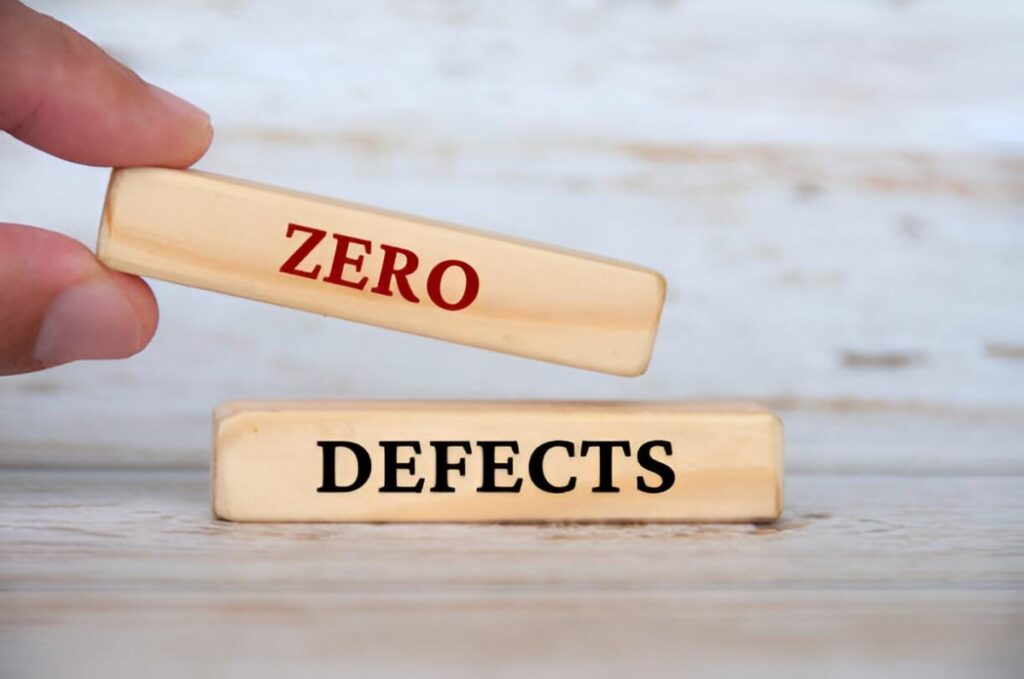In my years of working in finance and accounting, I’ve observed a fascinating phenomenon: the virtuous cycle. It’s a self-reinforcing loop where positive outcomes build on themselves, creating momentum that drives financial success. This concept isn’t just theoretical—it’s deeply rooted in both behavioral economics and mathematical principles. Today, I’ll explore how positive feedback mechanisms work, why they matter, and how you can harness them to achieve financial growth.
Table of Contents
Understanding the Virtuous Cycle
A virtuous cycle is a sequence of events where each iteration amplifies the previous one, leading to exponential growth or improvement. In finance, this often manifests as increased investment returns, improved creditworthiness, or enhanced business profitability. The opposite, a vicious cycle, occurs when negative feedback loops perpetuate decline.
Let’s start with a simple example. Imagine you invest \$1,000 in a stock that grows at an annual rate of 10\%. After the first year, your investment grows to \$1,100. If you reinvest the earnings, the next year’s growth is calculated on \$1,100, not the original \$1,000. Over time, this compounding effect creates a virtuous cycle of wealth accumulation.
The mathematical representation of this compounding effect is:
A = P \times (1 + r)^n
Where:
- A is the amount of money accumulated after n years, including interest.
- P is the principal amount (\$1,000 in this case).
- r is the annual interest rate (10\% or 0.10).
- n is the number of years the money is invested.
After 10 years, your investment would grow to:
A = 1000 \times (1 + 0.10)^{10} = \$2,593.74This example illustrates how small, consistent gains can snowball into significant wealth over time.
The Role of Behavioral Economics
While the math behind virtuous cycles is straightforward, human behavior often complicates things. Behavioral economics teaches us that people don’t always act rationally. For instance, the fear of losing money can prevent individuals from reinvesting their earnings, breaking the virtuous cycle.
I’ve seen this play out in my own career. A client once hesitated to reinvest dividends from a high-performing stock because they feared a market downturn. By not reinvesting, they missed out on the compounding effect, and their portfolio grew slower than it could have.
To overcome such behavioral barriers, it’s crucial to cultivate a long-term mindset. This means focusing on the bigger picture and resisting the urge to make impulsive decisions based on short-term market fluctuations.
Positive Feedback in Business
Virtuous cycles aren’t limited to personal finance—they’re equally powerful in business. Consider a company that invests in employee training. Better-trained employees are more productive, leading to higher-quality products or services. This, in turn, attracts more customers and increases revenue, allowing the company to invest even more in training.
Let’s break this down with a hypothetical example. Suppose a company spends \$100,000 on employee training, which increases productivity by 20\%. If the company’s initial revenue is \$1,000,000, the training investment could boost revenue to \$1,200,000. If the company reinvests a portion of the additional revenue into further training, the cycle continues.
The relationship can be expressed as:
R_{n+1} = R_n \times (1 + g)
Where:
- R_n is the revenue in year n.
- g is the growth rate (20\% or 0.20).
After three years, the revenue would be:
R_3 = 1,000,000 \times (1 + 0.20)^3 = \$1,728,000This example shows how strategic investments can create a self-sustaining cycle of growth.
The Power of Creditworthiness
Another area where virtuous cycles are evident is creditworthiness. A good credit score can lead to lower interest rates on loans, which reduces debt servicing costs and frees up cash for other investments. This, in turn, improves financial stability and further enhances creditworthiness.
For instance, let’s say you have a credit score of 750, which qualifies you for a mortgage with a 4\% interest rate. If your score drops to 650, the interest rate might increase to 5\%. On a \$300,000 mortgage, the difference in monthly payments would be:
M = P \times \frac{r(1 + r)^n}{(1 + r)^n - 1}
Where:
- M is the monthly payment.
- P is the loan amount (\$300,000).
- r is the monthly interest rate (4\% annual rate is 0.0033 monthly, and 5\% is 0.0042).
- n is the number of payments (360 for a 30-year mortgage).
For a 4\% interest rate:
M = 300,000 \times \frac{0.0033(1 + 0.0033)^{360}}{(1 + 0.0033)^{360} - 1} = \$1,432.25For a 5\% interest rate:
M = 300,000 \times \frac{0.0042(1 + 0.0042)^{360}}{(1 + 0.0042)^{360} - 1} = \$1,610.46The difference of \$178.21 per month adds up to \$64,155.60 over the life of the loan. By maintaining a high credit score, you can save a significant amount of money, which can be reinvested to create further financial growth.
Breaking Down the Components
To fully understand virtuous cycles, let’s break them down into their core components:
- Initial Investment: Whether it’s time, money, or effort, every virtuous cycle starts with an initial investment.
- Positive Feedback: The investment generates positive outcomes, which are reinvested to create further growth.
- Amplification: Each iteration of the cycle amplifies the previous one, leading to exponential growth.
- Sustainability: The cycle continues as long as the feedback remains positive and resources are available for reinvestment.
Real-World Examples
Example 1: Compound Interest in Retirement Savings
One of the most common examples of a virtuous cycle is retirement savings. By consistently contributing to a retirement account and reinvesting the earnings, individuals can build substantial wealth over time.
Let’s say you start saving \$500 per month at age 25, with an annual return of 7\%. By age 65, your savings would grow to:
FV = P \times \frac{(1 + r)^n - 1}{r}
Where:
- FV is the future value.
- P is the monthly contribution (\$500).
- r is the monthly return (7\% annual return is 0.0058 monthly).
- n is the number of contributions (480 months).
This example highlights the power of starting early and letting the virtuous cycle work in your favor.
Example 2: Business Growth Through Customer Satisfaction
A business that prioritizes customer satisfaction can create a virtuous cycle of growth. Satisfied customers are more likely to make repeat purchases and recommend the business to others, leading to increased revenue. This revenue can then be reinvested in improving products or services, further enhancing customer satisfaction.
For instance, a study by Bain & Company found that increasing customer retention rates by 5\% can increase profits by 25\% to 95\%. This demonstrates how small improvements can create a ripple effect, driving long-term success.
Challenges and Risks
While virtuous cycles are powerful, they’re not without challenges. One major risk is over-leveraging. For example, a business that takes on too much debt to fuel growth may find itself in a precarious position if revenue doesn’t meet expectations.
Similarly, in personal finance, overconfidence can lead to risky investments that disrupt the virtuous cycle. It’s essential to strike a balance between ambition and caution, ensuring that each step forward is sustainable.
Strategies for Harnessing Virtuous Cycles
- Start Early: The earlier you begin, the more time your investments have to compound.
- Reinvest Earnings: Reinvesting profits or returns accelerates growth.
- Monitor Progress: Regularly assess your financial or business strategies to ensure they’re on track.
- Mitigate Risks: Diversify investments and maintain a contingency fund to protect against setbacks.
Conclusion
The virtuous cycle is a powerful concept that underpins much of financial success. By understanding and leveraging positive feedback mechanisms, you can create momentum that drives exponential growth. Whether you’re managing personal finances or running a business, the principles remain the same: invest wisely, reinvest earnings, and maintain a long-term perspective.

![Unraveling the Virtuous Cycle: How Positive Feedback Fuels Financial Success # Unraveling the Virtuous Cycle: How Positive Feedback Fuels Financial Success In my years of working in finance and accounting, I’ve observed a fascinating phenomenon: the virtuous cycle. It’s a self-reinforcing loop where positive outcomes build on themselves, creating momentum that drives financial success. This concept isn’t just theoretical—it’s deeply rooted in both behavioral economics and mathematical principles. Today, I’ll explore how positive feedback mechanisms work, why they matter, and how you can harness them to achieve financial growth. ## Understanding the Virtuous Cycle A virtuous cycle is a sequence of events where each iteration amplifies the previous one, leading to exponential growth or improvement. In finance, this often manifests as increased investment returns, improved creditworthiness, or enhanced business profitability. The opposite, a vicious cycle, occurs when negative feedback loops perpetuate decline. Let’s start with a simple example. Imagine you invest [latex]\$1,000[/latex] in a stock that grows at an annual rate of [latex]10\%[/latex]. After the first year, your investment grows to [latex]\$1,100[/latex]. If you reinvest the earnings, the next year’s growth is calculated on [latex]\$1,100[/latex], not the original [latex]\$1,000[/latex]. Over time, this compounding effect creates a virtuous cycle of wealth accumulation. The mathematical representation of this compounding effect is: [latex]A = P \times (1 + r)^n[/latex] Where: - [latex]A[/latex] is the amount of money accumulated after [latex]n[/latex] years, including interest. - [latex]P[/latex] is the principal amount ([latex]\$1,000[/latex] in this case). - [latex]r[/latex] is the annual interest rate ([latex]10\%[/latex] or [latex]0.10[/latex]). - [latex]n[/latex] is the number of years the money is invested. After 10 years, your investment would grow to: [latex]A = 1000 \times (1 + 0.10)^{10} = \$2,593.74[/latex] This example illustrates how small, consistent gains can snowball into significant wealth over time. ## The Role of Behavioral Economics While the math behind virtuous cycles is straightforward, human behavior often complicates things. Behavioral economics teaches us that people don’t always act rationally. For instance, the fear of losing money can prevent individuals from reinvesting their earnings, breaking the virtuous cycle. I’ve seen this play out in my own career. A client once hesitated to reinvest dividends from a high-performing stock because they feared a market downturn. By not reinvesting, they missed out on the compounding effect, and their portfolio grew slower than it could have. To overcome such behavioral barriers, it’s crucial to cultivate a long-term mindset. This means focusing on the bigger picture and resisting the urge to make impulsive decisions based on short-term market fluctuations. ## Positive Feedback in Business Virtuous cycles aren’t limited to personal finance—they’re equally powerful in business. Consider a company that invests in employee training. Better-trained employees are more productive, leading to higher-quality products or services. This, in turn, attracts more customers and increases revenue, allowing the company to invest even more in training. Let’s break this down with a hypothetical example. Suppose a company spends [latex]\$100,000[/latex] on employee training, which increases productivity by [latex]20\%[/latex]. If the company’s initial revenue is [latex]\$1,000,000[/latex], the training investment could boost revenue to [latex]\$1,200,000[/latex]. If the company reinvests a portion of the additional revenue into further training, the cycle continues. The relationship can be expressed as: [latex]R_{n+1} = R_n \times (1 + g)[/latex] Where: - [latex]R_n[/latex] is the revenue in year [latex]n[/latex]. - [latex]g[/latex] is the growth rate ([latex]20\%[/latex] or [latex]0.20[/latex]). After three years, the revenue would be: [latex]R_3 = 1,000,000 \times (1 + 0.20)^3 = \$1,728,000[/latex] This example shows how strategic investments can create a self-sustaining cycle of growth. ## The Power of Creditworthiness Another area where virtuous cycles are evident is creditworthiness. A good credit score can lead to lower interest rates on loans, which reduces debt servicing costs and frees up cash for other investments. This, in turn, improves financial stability and further enhances creditworthiness. For instance, let’s say you have a credit score of 750, which qualifies you for a mortgage with a [latex]4\%[/latex] interest rate. If your score drops to 650, the interest rate might increase to [latex]5\%[/latex]. On a [latex]\$300,000[/latex] mortgage, the difference in monthly payments would be: [latex]M = P \times \frac{r(1 + r)^n}{(1 + r)^n - 1}[/latex] Where: - [latex]M[/latex] is the monthly payment. - [latex]P[/latex] is the loan amount ([latex]\$300,000[/latex]). - [latex]r[/latex] is the monthly interest rate ([latex]4\%[/latex] annual rate is [latex]0.0033[/latex] monthly, and [latex]5\%[/latex] is [latex]0.0042[/latex]). - [latex]n[/latex] is the number of payments (360 for a 30-year mortgage). For a [latex]4\%[/latex] interest rate: [latex]M = 300,000 \times \frac{0.0033(1 + 0.0033)^{360}}{(1 + 0.0033)^{360} - 1} = \$1,432.25[/latex] For a [latex]5\%[/latex] interest rate: [latex]M = 300,000 \times \frac{0.0042(1 + 0.0042)^{360}}{(1 + 0.0042)^{360} - 1} = \$1,610.46[/latex] The difference of [latex]\$178.21[/latex] per month adds up to [latex]\$64,155.60[/latex] over the life of the loan. By maintaining a high credit score, you can save a significant amount of money, which can be reinvested to create further financial growth. ## Breaking Down the Components To fully understand virtuous cycles, let’s break them down into their core components: 1. **Initial Investment**: Whether it’s time, money, or effort, every virtuous cycle starts with an initial investment. 2. **Positive Feedback**: The investment generates positive outcomes, which are reinvested to create further growth. 3. **Amplification**: Each iteration of the cycle amplifies the previous one, leading to exponential growth. 4. **Sustainability**: The cycle continues as long as the feedback remains positive and resources are available for reinvestment. ## Real-World Examples ### Example 1: Compound Interest in Retirement Savings One of the most common examples of a virtuous cycle is retirement savings. By consistently contributing to a retirement account and reinvesting the earnings, individuals can build substantial wealth over time. Let’s say you start saving [latex]\$500[/latex] per month at age 25, with an annual return of [latex]7\%[/latex]. By age 65, your savings would grow to: [latex]FV = P \times \frac{(1 + r)^n - 1}{r}[/latex] Where: - [latex]FV[/latex] is the future value. - [latex]P[/latex] is the monthly contribution ([latex]\$500[/latex]). - [latex]r[/latex] is the monthly return ([latex]7\%[/latex] annual return is [latex]0.0058[/latex] monthly). - [latex]n[/latex] is the number of contributions (480 months). [latex]FV = 500 \times \frac{(1 + 0.0058)^{480} - 1}{0.0058} = \$1,223,459.22[/latex] This example highlights the power of starting early and letting the virtuous cycle work in your favor. ### Example 2: Business Growth Through Customer Satisfaction A business that prioritizes customer satisfaction can create a virtuous cycle of growth. Satisfied customers are more likely to make repeat purchases and recommend the business to others, leading to increased revenue. This revenue can then be reinvested in improving products or services, further enhancing customer satisfaction. For instance, a study by Bain & Company found that increasing customer retention rates by [latex]5\%[/latex] can increase profits by [latex]25\%[/latex] to [latex]95\%[/latex]. This demonstrates how small improvements can create a ripple effect, driving long-term success. ## Challenges and Risks While virtuous cycles are powerful, they’re not without challenges. One major risk is over-leveraging. For example, a business that takes on too much debt to fuel growth may find itself in a precarious position if revenue doesn’t meet expectations. Similarly, in personal finance, overconfidence can lead to risky investments that disrupt the virtuous cycle. It’s essential to strike a balance between ambition and caution, ensuring that each step forward is sustainable. ## Strategies for Harnessing Virtuous Cycles 1. **Start Early**: The earlier you begin, the more time your investments have to compound. 2. **Reinvest Earnings**: Reinvesting profits or returns accelerates growth. 3. **Monitor Progress**: Regularly assess your financial or business strategies to ensure they’re on track. 4. **Mitigate Risks**: Diversify investments and maintain a contingency fund to protect against setbacks. ## Conclusion The virtuous cycle is a powerful concept that underpins much of financial success. By understanding and leveraging positive feedback mechanisms, you can create momentum that drives exponential growth. Whether you’re managing personal finances or running a business, the principles remain the same: invest wisely, reinvest earnings, and maintain a long-term perspective. As I reflect on my own experiences, I’m reminded of the importance of patience and persistence. Financial success rarely happens overnight, but with the right strategies, you can set the stage for a virtuous cycle that propels you toward your goals. --- This article is designed to be both informative and actionable, providing readers with the tools they need to harness the power of virtuous cycles in their own financial journeys. By combining mathematical insights with real-world examples, I hope to demystify this concept and inspire you to take the first step toward creating your own virtuous cycle.](https://accountend.com/wp-content/uploads/2023/10/Unraveling-the-Virtuous-Cycle-How-Positive-Feedback-Fuels-Financial-Success-1.jpg)



